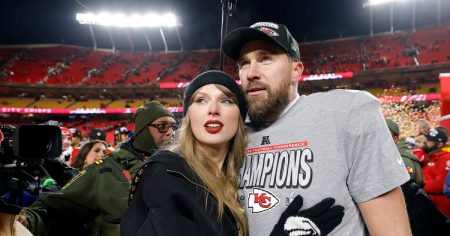Casting choices are crucial in shaping iconic roles in film and television, and history is replete with instances where the original selections could have changed the landscape of beloved characters. One notable example includes the casting of Russell Hammond in the 2000 music drama “Almost Famous,” directed by Cameron Crowe. Initially, Crowe had his sights set on Brad Pitt to embody the charismatic lead singer of the fictional band Stillwater. At the time, Pitt was just at the beginning of his ascent in Hollywood, demonstrating significant talent. Crowe reminisced in the “Origins: Almost Famous Turns Twenty” podcast about how Pitt’s audition was not only impressive but also had him laughing uncontrollably. However, despite Pitt’s comedic prowess and evident appeal, Crowe ultimately decided that he was not the right fit for the role.
Crowe’s decision was influenced by a deeper recognition of Pitt’s ambivalence towards the character. While Pitt loved the idea of playing the role, Crowe sensed he did not fully connect with the character on the page. This emotional insight ultimately led to Crowe’s heartache when Pitt withdrew from the project, an experience he described as deeply saddening. This casting anecdote illuminates the complexities involved in selecting actors for pivotal roles, revealing how connections to characters can dictate the success of a performance. The reflection on Pitt highlights how vital it is for actors to resonate with the essence of their characters, rather than simply being drawn to the appeal of the role.
The world of casting goes beyond brimming with missed opportunities and alternate realities; it showcases an intricate dance of chemistry, timing, and talent. Many well-known actors have stepped away from iconic parts, leading audiences to wonder how different the narratives might have unfolded had those actors accepted the roles. Sometimes the names associated with these near-castings are surprising, and they open doors to fascinating speculation about the what-ifs of movie history. For example, while the industry often champions its chosen stars, it frequently sidelines the names that almost became household figures.
The realities of these casting decisions can also reflect on broader themes of representation and typecasting within the film and television industry. Many actors who were initially sought after for significant roles often grappled with industry perceptions and the narrowly defined character types available to them, which could pigeonhole their performances. The legacy of hiring decisions impacts not just the projects themselves, but also the narrative about who gets to tell stories and how those stories are told. For example, an actor who is unable to fully dive into a character might not only limit their own potential but potentially steer the narrative in a different direction, showcasing how intertwined the fabric of casting and storytelling truly is.
Moreover, audiences have developed a keen interest in the stories behind the casting process, which can ignite discussions about the evolving landscape of Hollywood. As stars actively shape their careers, they might choose roles that align more closely with their artistic identities, fueling higher stakes in the quest to find the right fit for iconic roles. The competitive nature of the industry often leads to fierce rivalries and unexpected auditions, which can result in the emergence of new talent. The public reaction to casting announcements can also have profound ramifications on an actor’s career trajectory, shaping perceptions and influencing future opportunities.
In conclusion, the domain of casting encapsulates a vital and often underexplored aspect of filmmaking. The nearly-cast roles serve as a manifest reflection of various intersections such as timing, actor identity, and audience expectations. The real story behind casting choices invites viewers to engage with the narratives beyond the finished product on screen. In examining the broader implications of these decisions, one can appreciate the artistry involved in casting a film or show. The result is a rich tapestry of performances that reflects both the depth of character and the evolving complexity of narratives that continue to resonate with audiences around the world.










